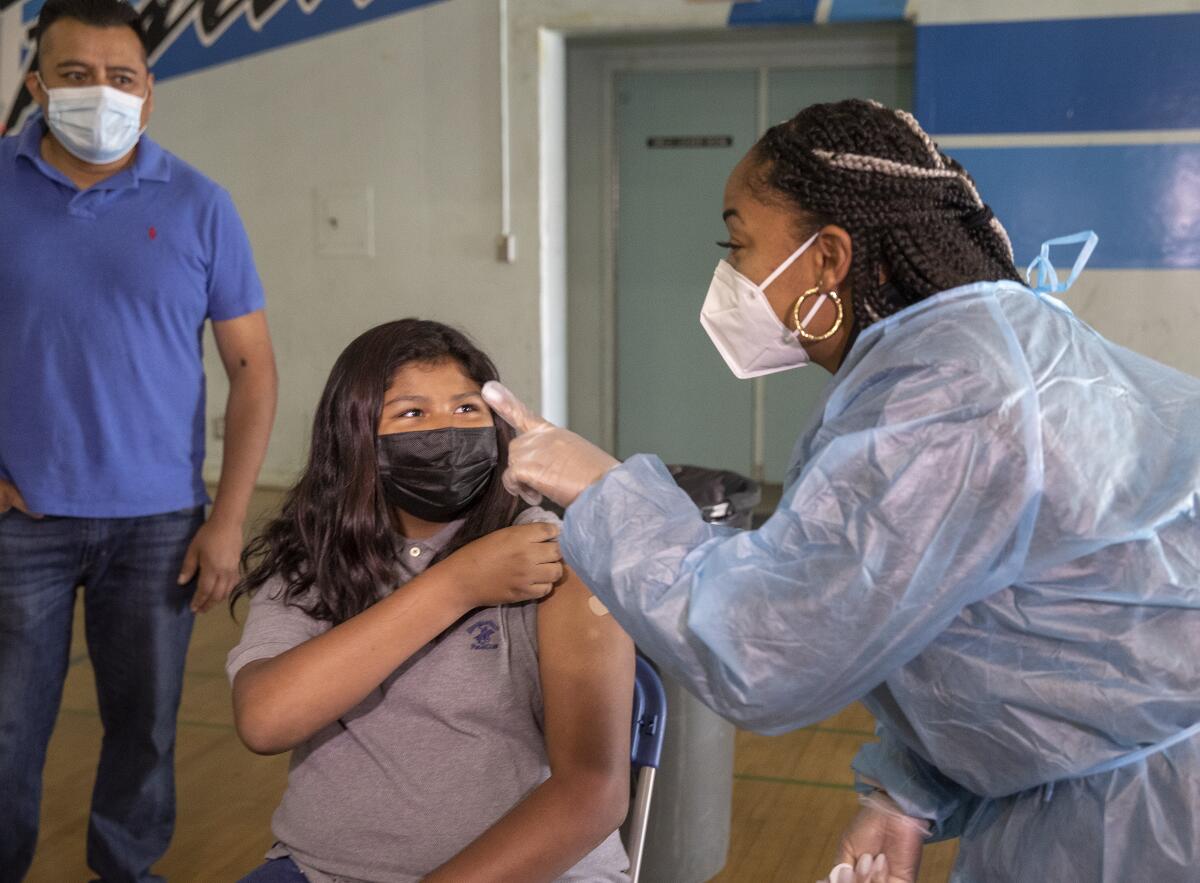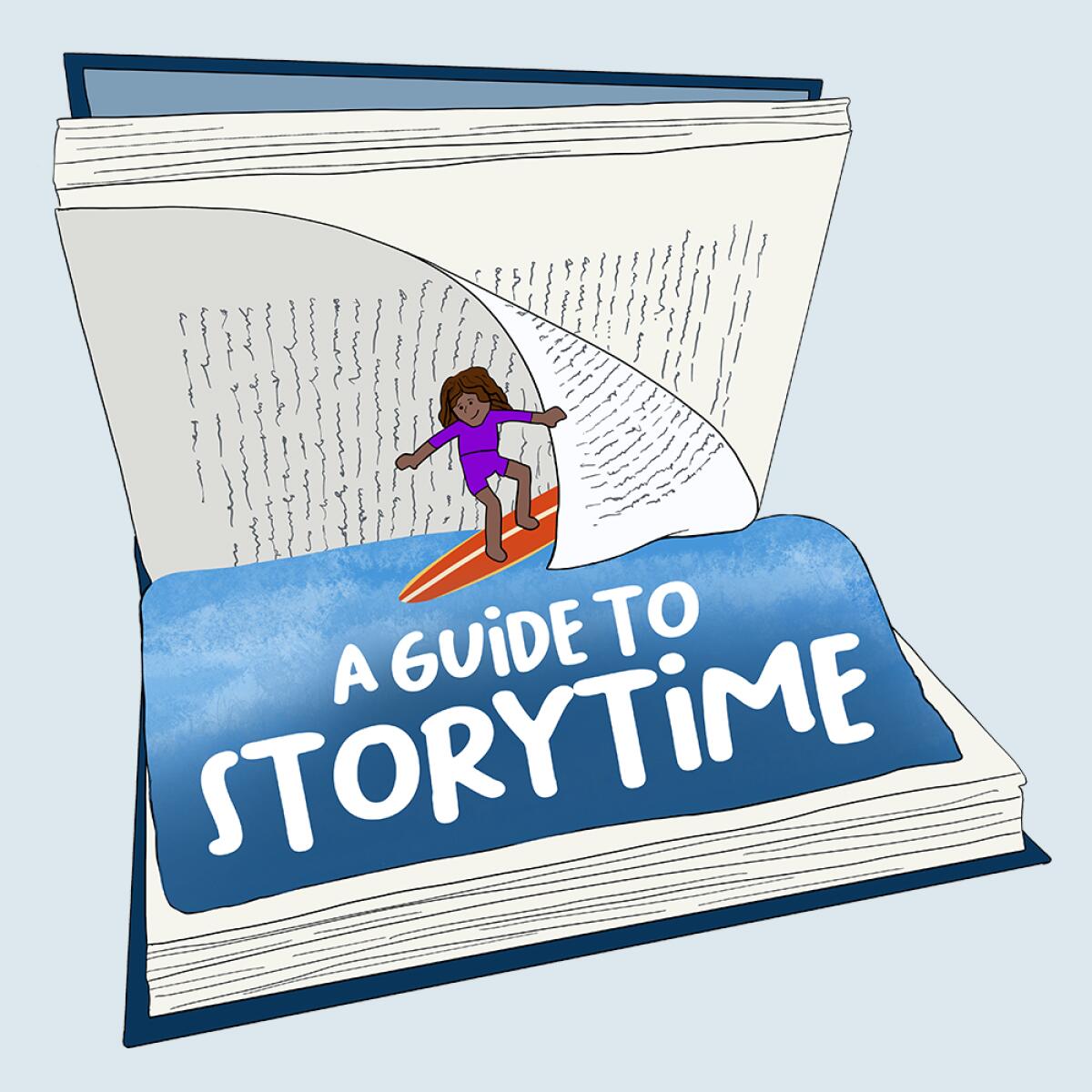Understanding L.A. Unified’s groundbreaking student vaccine mandate

- Share via
This is the Sept. 13 edition of the 8 to 3 newsletter about school, kids and parenting. Like what you’re reading? Sign up to get it in your inbox every Monday.
The Los Angeles Unified School District made national headlines again last week when it became the first large district in the U.S. to mandate COVID-19 vaccines for all eligible students, in addition to teachers and other staff.
I got on the phone with my colleague Howard Blume to learn more about the mandate, its local and national impact, and The Times’ LAUSD coronavirus data tracker.
8-to-3: How did this mandate happen?
Howard Blume: Within the politics of LA Unified, the mandate is a lot easier than it would be in a lot of places. The leadership of the teachers union was actually advocating for it, and other unions expressed support for this as well. We take that for granted in Los Angeles, but that wouldn’t be the case in all places. It matters a lot in a place like Los Angeles where unions are influential.
Then you have a liberal board of education, and so the politics align. They’ve been discussing the issue for months, so it’s not coming out of nowhere.
8-to-3: But nationally it’s pretty unprecedented. Other than Culver City, was there anyone else mandating student vaccinations before last week?
HB: I’ve asked the statewide teachers unions, and they did not know of any district other than Culver City that had approved a similar mandate. It’s on the docket for Oakland, but this is really groundbreaking in many ways. Culver City gets credit possibly for being the first in the nation, but it’s a different thing when L.A. Unified does it.
8-to-3: LAUSD already had some of the strictest COVID-control policies in the country — universal masking, universal weekly testing, universal staff vaccinations. Parents and teachers in other large districts around the country are now talking about LAUSD as a model. That’s very different from the attention L.A. was getting last year.
HB: L.A. Unified has always been in the forefront on COVID safety issues. Last year, that made them the subject of a lot of criticism because the district was slower to reopen schools. Now we’re in a climate where schools essentially have to be open in California, and they’ve taken that same safety philosophy and committed to keeping schools open. Now it expresses itself in other ways, and that includes extending the mask mandate to outdoors, it means the weekly coronavirus testing, and the next logical extension of the student mandate.
8-to-3: Will having more students vaccinated shorten or eliminate quarantines and other disruptions to in-person learning?
HB: Absolutely, and in fact that is a possible major incentive to getting vaccinated. Those who are vaccinated do not automatically have to go home on a quarantine if they are exposed. Instead they go into a modified quarantine. For that you are not supposed to participate in extracurriculars, but can remain in class provided you have no symptoms. You also are directed to take a coronavirus test on the fifth day after exposure.
8-to-3: Given the relatively widespread enthusiasm for COVID safety measures here, what concerns are there about this new policy?
HB: The district estimates there are 80,000 eligible students who have not been vaccinated. If you’re a person who has not been vaccinated at this point, it represents a choice. It’s harder for some people to get vaccines than others, they have difficulties with work schedules, childcare — I’m not minimizing that it’s been challenging, but students 12 and older have been eligible since May. And if they haven’t been vaccinated yet, at some level that represents a choice. Does that choice change because of the mandate? For some, it will.
But that’s not going to work for everybody, and the district’s independent study program was overwhelmed when it had to deal with 10,000 people at the beginning of the year. Thousands more would further stress the program.
Also, there’s likely to be litigation, but so far litigation has not stopped the carrying out of other safety measures. For the most part, L..A Unified in particular has gone ahead with its safety measures in spite of litigation.
If many students choose to leave L.A. Unified entirely over the mandate, that could create another set of problems — related to the stability of classes, programs and schools and future funding, which is based on enrollment and attendance.
8-to-3: Schools mandate other vaccines for attendance, including Tdap for all incoming 7th-graders. Assuming existing COVID-19 vaccines get full authorization for 12-to-15 year-olds — as opposed to the Emergency Use Authorization they have now — what standing would those lawsuits have?
HB: One argument attorneys whom I have talked to present is that this vaccine is different because other vaccines have a longer track record and clearly prevent a disease that is a serious threat to many or most children. They will argue that for the vast majority of children, COVID-19 is not a serious threat and therefore the rights of families to choose should not be abridged. They also will argue that this vaccine is more like the flu vaccine in terms of its effectiveness — meaning you can still get the flu after a vaccine — whereas you get the polio vaccine and you’re essentially not going to get polio.
The latest on coronavirus trends, tracking and vaccines
The Times data team, which has done comprehensive work tracking the pandemic’s toll throughout California, has added an easy-to-use tracker of active COVID-19 cases in Los Angeles Unified schools. My colleague Iris Lee is collecting data posted by the district and tracking the numbers over time. If you look at the trend line right now, you can see that the number of active cases is going down. You can get a sense of, in the totality, how many schools have lots of cases and how many have no cases.
Pediatric coronavirus infections in L.A. County show that for children of all ages, rates are declining even as schools have reopened. However, health officials note that children now make up a greater share of people who are getting infected. Times reporters Luke Money, Marissa Evans and Rong-Gong Lin II explain the trends.
For a quick primer on the L.A. vaccine mandate, Howard Blume assembled a “What you need to know” guide. Hope it helps with your questions.
Should the FDA move faster on COVID-19 vaccines for young children? While vaccine mandates are in the news for children 12 and older, my colleague and Times science writer Melissa Healy explains the latest on vaccine development for those under 12. Her story examines how soon the youngest Americans can safely get their jab and why pediatric considerations are so different.
Enjoying this newsletter?
Consider forwarding it to a friend, and support our journalism by becoming a subscriber.
Did you get this newsletter forwarded to you? Sign up here to get it in your inbox every week.
And let’s take a break from COVID news...
An anti-homework movement is simmering. More and more teachers and parents are demanding reduced homework loads to better balance family life and after-3 p.m. school pressures. While it does not look like homework will be eliminated, what can be done to ease the after-school burden? USA Today and the Today Show.
Here are some reasons to applaud if your child is a music maker. In her book “Of Sound Mind” (MIT Press), auditory neuroscientist Nina Kraus explores the brain benefits of music training in children. Her body of work shows that children who learn to play an instrument show improved language and reading skills. Bring on the trumpet! The Hechinger Report

Finally, let’s read. Check out A Guide to Storytime! The L.A. Times Reading by 9 program has released its annual bilingual literacy guide for parents and educators. The 2021 guide, created in partnership with the Los Angeles Public Library, celebrates children’s books with ties to California to highlight the rich diversity of our community.
A Guide to Storytime is a free online and downloadable resource, available in both English and Spanish, that features book recommendations for children up to age 9, a catalog of local literacy resources and tips for raising young readers.
Reading by 9 is a literacy initiative from the L.A. Times aimed at supporting young kids as they develop their reading skills, which are crucial for future academic success. Each year, Reading by 9 partners with local childhood literacy organizations to produce its free guide and events within the community.
I want to hear from you.
Have feedback? Ideas? Questions? Story tips? Email me. And keep in touch on Twitter.
Sign up for Essential California
The most important California stories and recommendations in your inbox every morning.
You may occasionally receive promotional content from the Los Angeles Times.








